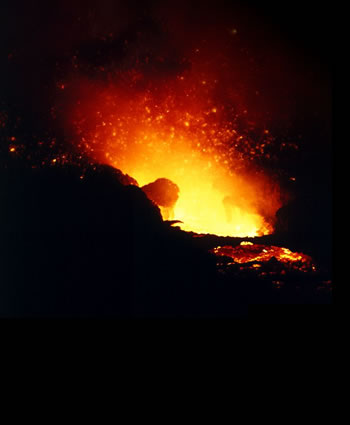Calibration Samples
For spectrometer calibration it is necessary to have suitable calibration samples. The most important requirement arises from the fact that it is not an absolute but a relative measurement which is carried out. With experience it is possible to deduce the unknown from the known. The unknown is the analysis sample; the known the calibration sample. Analysis and calibration samples must be comparable, otherwise, inter-element effects will occur.
The matrix is the whole body of data for a substance eg. elements, structure, metallurgical history, particle size distribution (in the case of powders) etc. In addition to the influence of elements, in the case of metals with spark discharges in argon (SDAR) other influences can be largely eliminated by isoforming (HEPS technique). Strictly speaking, the change in the element to be determined gives rise to another matrix; an inter-element produced by the measurement method. Many inter-element effects can be eliminated by eliminating their cause. If the cause is unknown, the magnitude of systematic error can be empirically determined and applied as a correction. Empirical determination of an inter-element effect is also a calibration, for which calibration samples are also necessary. A further requirement is that the concentrations of the elements to be calibrated and other elements cover the ranges to be analysed.
Calibration samples are (production quality) reference samples and certified reference samples. With respect to their matrix, reference samples largely correspond to the (production quality) analysis samples, and are therefore the basis for any spectrometer calibration.
The analysis values of certified reference samples (CRM) are guaranteed by official agencies, scientific/technical Institutes or commercial firms; it is highly probable that they are accurate, but they have certain disadvantages. They are expensice; their physical shape is not always suitable for the spectrometer stand; they are only available for the selected elements and concentration ranges; their matrix is frequently not identical with the analysis sample.
The work which has to be done on CRM's, the aim is to introduce as many elements as possible into a few samples combined to form a set (eg. BAS samples 481-487 contain 2-20 W, 0-10 Co, 0-10 Mo). Such samples should only be used for "auxiliary calibrations" for high-speed steels which are supplemented with calibration samples corresponding to the qualities of high-speed steels in question.
Calibration samples can sometimes be synthesized eg. by alloying or diiluting part of a melt (some kg). Because of manipulation, the values are not reliable, however, subsequent chemical analysis is carried out.
One important, frequently used calibration procedure is the "additive method" in which the sample, which has concentrations at the start of the range, is enriched, with the advantage of starting with a matrix which is almost identical with that of the analytical sample.
If no calibration samples are available, it is possible to estimate the concentrations in the production quality samples, based on the concentrations equivalent of the spectral background (BEC). For example, the BEC for zinc determination in an iron base is 0,05% Zn. (The figure obtained is instrument-specific). If a pure ironsample is set to 500 dig, assuming a linear calibration relationship, then 100 dig = 0,01% Zn. The zinc intensity of the production quality samples is measured simultaneously each time, and those which give significant readings above the background (500 dig) are used for chemical analysis. This is a simpler way of obtaining calibration samples than carrying out chemical analysis of numerous samples until some are found in which the target element is present in the desired concentrations.

